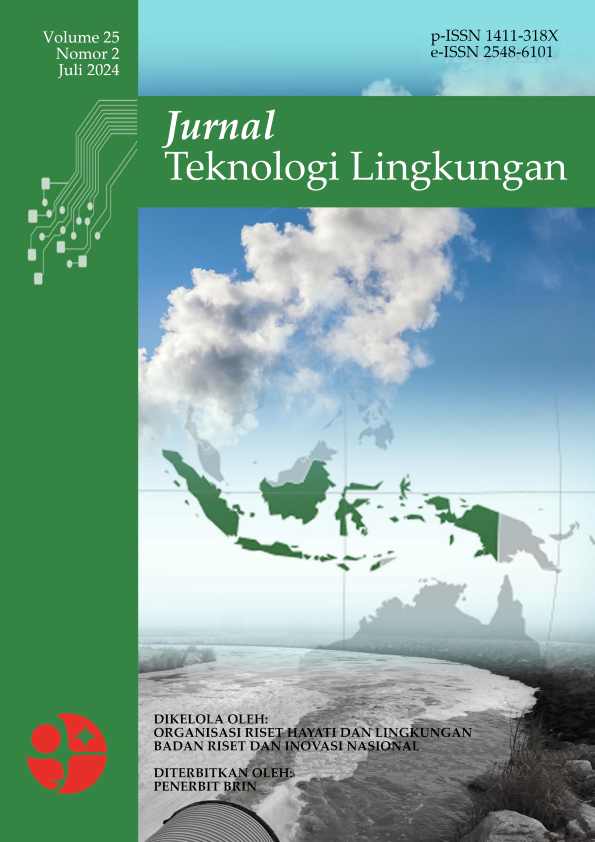Pengaruh Tekanan pada Reverse Osmosis terhadap Penyisihan Kadar Ion Klorida (Cl-) dan Total Dissolved Solids (TDS) pada Pengolahan Air Payau
Main Article Content
Abstract
In the operation and maintenance of reverse osmosis (RO) systems, various challenges arise. One common issue faced is pressure fluctuations that can affect the quality of the produced water, shorten the lifespan of the membrane, and lead to system failure. This study aims to evaluate the performance of thin film composite spiral wound RO membranes in reducing Chloride ion (Cl-) and Total Dissolved Solids (TDS) levels in brackish water using low pressure. The RO membrane used in this research is made of polysulfone (PSF) with a thin film composite spiral wound type. The variables analyzed are the flow rate (Q) ranging from 1,000 to 2,000 mL/minute and the operational pressure (P) between 3.5 and 5 bar. The research results show that the RO membrane can reduce the Cl- level by 99.79% and TDS by 99.92% at a flow rate of 2000 mL/minute with an operational pressure of 5 bar. From the research findings, it can be concluded that an increase in operational pressure enhances the efficiency of reducing Cl- and TDS levels. This is due to the strong push on the feed that accelerates the salt penetration process through the membrane, which is then expelled through the retentate or wastewater stream.
Abstrak
Selama pengoperasian dan pemeliharaan sistem reverse osmosis (RO), berbagai tantangan muncul. Masalah yang umum terjadi adalah fluktuasi tekanan yang dapat mempengaruhi kualitas air yang dihasilkan, memperpendek umur membran dan menyebabkan kegagalan sistem. Penelitian ini bertujuan untuk mengevaluasi kinerja membran RO tipe thin film composite spiral wound dalam mengurangi kadar ion klorida (Cl-) dan TDS (Total Dissolved Solid) dalam air payau dengan menggunakan tekanan rendah. Membran RO yang digunakan dalam penelitian ini terbuat dari polysulfon (PSF) dengan jenis thin film composite spiral wound. Variabel yang dianalisis adalah laju aliran (Q) antara 1.000–2.000 mL/menit dan tekanan operasional (P) antara 3,5–5 bar. Hasil penelitian menunjukkan bahwa membran RO mampu mengurangi kadar Cl- sebesar 99,79% dan TDS sebesar 99,92% pada laju aliran 2.000 mL/menit dengan tekanan operasional 5 bar. Berdasarkan hasil penelitian, dapat disimpulkan bahwa peningkatan tekanan operasional meningkatkan efisiensi pengurangan kadar Cl- dan TDS. Hal ini disebabkan oleh dorongan kuat pada umpan yang mempercepat proses penetrasi garam melalui membran, yang kemudian dikeluarkan melalui aliran retenate atau air buangan.
Article Details

This work is licensed under a Creative Commons Attribution-ShareAlike 4.0 International License.

